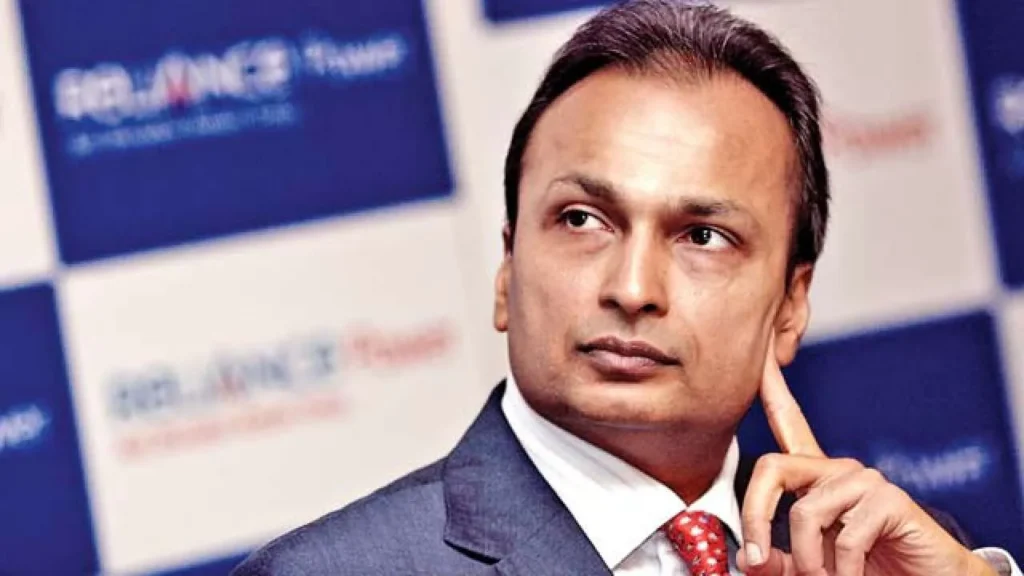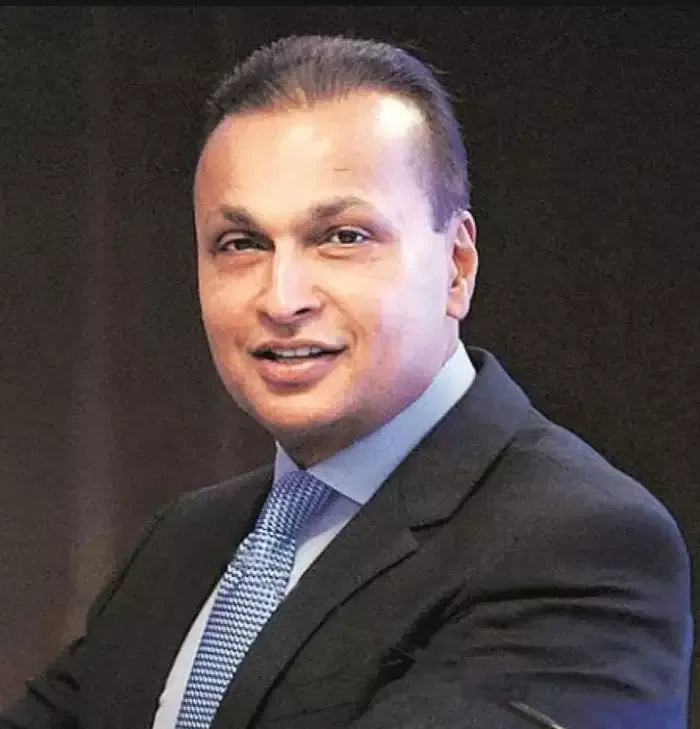Anil Ambani Net Worth (2025): The Complete Financial Rise and Fall Analysis
Anil Ambani’s current net worth is estimated at $80 million as of 2025, representing one of the most dramatic wealth declines in modern business history.

This figure marks a staggering 99.8% drop from his peak net worth of $42 billion in 2008, when he ranked among the world’s ten wealthiest individuals. The dramatic reversal of fortune stands in stark contrast to his brother Mukesh Ambani, who has become Asia’s richest person with a net worth exceeding $110 billion.
| Year | Net Worth | Key Event |
|---|---|---|
| 2002 | $5.2 billion | Inheritance after father Dhirubhai Ambani’s death |
| 2005 | $8.8 billion | Reliance Group split with brother Mukesh |
| 2008 | $42 billion | Peak wealth (ranked 6th richest globally) |
| 2010 | $13.7 billion | Telecom ventures begin struggling |
| 2018 | $2.4 billion | Reliance Communications bankruptcy filing |
| 2020 | “Near zero” | Declared in UK court proceedings |
| 2025 | $80 million | Current estimation (remaining assets after settlements) |
Anil Ambani Net Worth: Current Status and Key Figures
The stark reality of Anil Ambani’s financial collapse was confirmed in February 2020 during UK court proceedings where he claimed his “net worth was zero” after accounting for liabilities. More recent assessments place his current net worth at approximately $80 million as of early 2025, primarily consisting of minority stakes in remaining Reliance Group companies and personal assets not seized through legal proceedings.
Read More: https://socialmediagirls.io/
Financial analysts from Morgan Stanley and Goldman Sachs have suggested his actual net worth may be marginally higher due to undisclosed assets potentially held through complex offshore structures, though these claims remain unverified. Court documents from case HC-2017-000636 in London’s High Court indicate personal guarantees exceeding $925 million against various loans, severely impacting his financial position.
Key financial indicators reveal the extent of his decline:

- Debt-to-asset ratio: Estimated at 8.2:1 (compared to industry average of 0.6:1)
- Market capitalization of key remaining companies: Down 94% from peak valuation
- Personal shareholding value in listed entities: Approximately $42 million
- Annual income: Reduced by over 99% from 2008 levels
Anil Ambani: Biography and Business Background
Born on June 4, 1959, as the younger son of legendary Indian industrialist Dhirubhai Ambani, Anil was educated at Mumbai’s prestigious Campion School before earning his MBA from the Wharton School of the University of Pennsylvania. His early business acumen was apparent when he joined Reliance Industries in 1983, quickly becoming instrumental in the company’s financial expansion, including India’s largest IPO at that time.
Following his father’s death in 2002 without a clear succession plan, Anil and his elder brother Mukesh engaged in a public and acrimonious battle for control of the Reliance empire. Their mother Kokilaben ultimately mediated a settlement in 2005 that divided the conglomerate, with Anil receiving the newer growth businesses including telecommunications, power generation, and financial services.
This division provided Anil with companies valued at approximately $21 billion—enterprises that seemed positioned for substantial growth in India’s rapidly expanding economy. His initial business success following the split was remarkable, with his net worth nearly doubling annually between 2005-2008 as he aggressively expanded into new sectors and international markets.
The Reliance Empire: Building a Fortune
Post-division, Anil Ambani rebranded his portion as the Reliance Anil Dhirubhai Ambani Group (ADAG), later simplified to Reliance Group. His business empire expanded rapidly through ambitious acquisitions and venture launches, reaching its zenith with the following key holdings:
| Company | Sector | Peak Valuation | Notable Assets |
|---|---|---|---|
| Reliance Communications | Telecommunications | $15.2 billion | Second-largest telecom operator in India |
| Reliance Capital | Financial Services | $9.8 billion | Insurance, mutual funds, stockbroking |
| Reliance Infrastructure | Infrastructure | $8.1 billion | Power distribution, road projects, metro rails |
| Reliance Power | Energy | $17.5 billion | Multiple power plants across India |
| Reliance Entertainment | Media & Entertainment | $2.3 billion | DreamWorks partnership, gaming ventures |
During his peak financial performance (2008-2010), Anil orchestrated several landmark deals, including partnerships with international entities like Steven Spielberg’s DreamWorks ($1.5 billion), signing a $7 billion deal with MTN Group, and launching the largest IPO in India’s history with Reliance Power ($3 billion raised but later underperformed dramatically).
According to financial filings from this period, his companies carried a relatively manageable combined debt of approximately $12 billion against assets valued at over $70 billion, creating the illusion of sustainable leverage that would later prove catastrophic.
The Financial Downfall: Analyzing the Collapse
Anil Ambani’s spectacular fall began with several critical missteps and triggering events between 2010-2015. The first major blow came when India’s Supreme Court ruled against Reliance Natural Resources in a gas pricing dispute with Mukesh’s Reliance Industries, costing the company billions in potential revenue.
The telecommunications sector proved to be his most significant failure. Reliance Communications accumulated approximately $7 billion in debt while attempting to expand rapidly, but faced devastating market disruption when Mukesh Ambani launched Reliance Jio in 2016, offering free services that triggered a price war. This strategic competition between brothers effectively destroyed Anil’s telecom business.
A company-by-company debt analysis reveals the extent of the financial mismanagement:
| Company | Peak Debt | Major Creditors | Key Failure Factors |
|---|---|---|---|
| Reliance Communications | $7.0 billion | Chinese Development Banks, SBI | Failed 4G transition, market disruption, high spectrum costs |
| Reliance Capital | $2.8 billion | Multiple Indian banks | Failed insurance ventures, regulatory challenges |
| Reliance Infrastructure | $3.5 billion | IDBI, Axis Bank | Delayed projects, cost overruns, liquidity crunch |
| Reliance Power | $5.2 billion | US ExIm Bank, domestic lenders | Regulatory hurdles, abandonment of ultra-mega power projects |
According to Dr. Sanjeev Kumar, financial strategist at ICICI Securities: “Anil Ambani’s downfall represents a textbook case of excessive leverage combined with regulatory challenges and market disruption. The personal guarantees provided against corporate loans created a fatal entanglement of personal and corporate finances.”
The debt crisis accelerated when multiple ventures failed simultaneously, creating a liquidity crisis across his business empire that prevented cross-company bailouts—a strategy that might have sustained operations long enough for market recoveries.
Legal and Financial Challenges
The legal challenges facing Anil Ambani have been as spectacular as his financial decline. Court documents reveal over 40 significant legal proceedings against him and his companies since 2018, with the most damaging being the Industrial and Commercial Bank of China Ltd v. Anil Ambani case (London High Court, 2020).
| Case | Court/Jurisdiction | Judgment Amount | Status |
|---|---|---|---|
| Industrial and Commercial Bank of China v. Ambani | UK High Court | $716 million | Settlement in progress |
| Ericsson v. Reliance Communications | Supreme Court of India | $77 million | Paid after contempt proceedings |
| SBI v. Reliance Communications | NCLT Mumbai | $2.9 billion | Bankruptcy proceedings ongoing |
| Yes Bank v. Reliance Infrastructure | Mumbai High Court | $313 million | Under appeal |
The UK court case proved particularly damaging as Justice Nigel Teare ruled that Ambani must pay $716 million to three Chinese banks. During these proceedings, his lawyers made the remarkable claim that his net worth was zero despite his previous status as one of the world’s richest individuals. The court ultimately rejected his testimony as “implausible” and “not honest.”
The bankruptcy proceedings for Reliance Communications have been particularly complex, with assets valued significantly below outstanding debt. As noted by bankruptcy specialist Vinod Kothari: “The Reliance Communications insolvency represents one of India’s most complex cases, with secured creditors likely to recover less than 20% of outstanding debt.”
Personal guarantees have proven especially problematic, with Ambani personally liable for approximately $925 million in corporate debt. These guarantees have forced the liquidation of personal assets and created ongoing legal exposure.
Assets and Investments: What Remains
After years of asset sales, liquidations, and legal settlements, Anil Ambani’s remaining holdings represent a fraction of his former empire. Current business holdings primarily consist of minority stakes in downsized Reliance Group companies with significantly reduced operations.
His known real estate holdings have diminished substantially, though some properties remain:

- A bungalow in Mumbai’s Pali Hill (valued at approximately $14 million)
- Partial ownership of family property on Altamount Road, Mumbai
- Reported international properties in Dubai and London (ownership structure unclear)
Luxury assets have largely been liquidated, including:
- His collection of luxury cars (previously included Rolls Royce, Mercedes Maybach)
- Private aircraft (a Bombardier Global Express XRS and two Falcon 7X jets were sold)
- Yacht “Tian” (sold in 2018 for approximately $95 million)
Financial analysis of remaining investments indicates diminished but not entirely eliminated holdings:
- Approximately 0.12% stake in Reliance Industries (worth approximately $8 million)
- Minority shareholdings in remaining Reliance Group companies
- Investments through private family trusts with undisclosed assets

As noted by financial investigative journalist Sucheta Dalal: “The complexity of Ambani’s financial structures makes it challenging to provide a definitive inventory of assets. Offshore structures and nominee holdings potentially mask the true extent of remaining wealth.”
Family Dynamics: The Ambani Wealth Distribution
The vast wealth gap between Anil and his brother Mukesh represents one of the most dramatic sibling financial divergences in business history. While Anil’s wealth declined by over 99%, Mukesh has become Asia’s richest person with a fortune exceeding $110 billion.
| Metric | Anil Ambani | Mukesh Ambani |
|---|---|---|
| Current Net Worth | $80 million | $110 billion |
| Primary Business | Fragmented holdings | Reliance Industries |
| Annual Revenue | ~$400 million | ~$110 billion |
| Market Capitalization | <$1 billion combined | >$200 billion |
| Business Direction | Contracting | Expanding |
The brothers’ relationship remains complex and largely distant. After years of public disputes, they appeared to reconcile when Mukesh helped Anil avoid jail time by paying Ericsson dues in 2019. However, business competition remains evident, particularly in how Reliance Jio’s market entry devastated Anil’s telecommunications business.
According to family business expert and author Kavil Ramachandran: “The Ambani family split created a textbook case of how succession disagreements can lead to dramatically different outcomes. While both brothers initially prospered, their divergent management approaches and strategies led to vastly different results.”
The broader family wealth distribution includes Anil’s wife Tina Ambani and their two sons, Anmol and Anshul, though exact figures for their personal assets remain undisclosed. Both sons have taken roles in remaining family businesses in recent years, attempting to stabilize operations.

Recovery Efforts and Future Outlook
Anil Ambani’s debt restructuring strategies have yielded limited success, with most efforts focused on asset sales rather than operational turnarounds. His primary approach has been divesting assets to pay down debt, including:
- Sale of Reliance Entertainment’s entire stake in DreamWorks ($390 million)
- Divestment of Mumbai power distribution business to Adani ($2.1 billion)
- Sale of radio business to Zee Group ($200 million)
- Liquidation of real estate holdings in Mumbai, Delhi and international locations
Financial analysts remain skeptical about significant recovery prospects. According to Hemindra Hazari, independent banking analyst: “The core issue is that Ambani’s remaining businesses lack scale and competitive advantages in highly contested markets. Without transformative operational changes or significant capital infusion, substantial recovery appears unlikely.”
Multiple scenario analyses for future wealth projections indicate:
- Pessimistic Scenario: Continued erosion of remaining wealth through legal settlements
- Moderate Scenario: Stabilization around current levels with minimal growth
- Optimistic Scenario: Potential recovery to the $250-500 million range if remaining businesses can be successfully restructured

Recent business activities show attempts at smaller-scale ventures, though none with transformative potential proportionate to previous losses.
Related Post: Wayne Newton Net Worth
Lessons from Anil Ambani’s Financial Journey
The dramatic rise and fall of Anil Ambani offers several critical business lessons according to corporate strategy experts. Harvard Business School professor Rajiv Lal notes: “The Ambani case demonstrates how excessive leverage can transform temporary market challenges into existential threats. The speed of the collapse highlights how quickly compounding financial problems can accelerate.”
Compared to other notable business downfalls, Ambani’s case stands out for both its scale and speed:
| Business Leader | Peak Net Worth | Decline Percentage | Primary Cause | Time Period |
|---|---|---|---|---|
| Anil Ambani | $42 billion | 99.8% | Debt, failed ventures | 13 years |
| Elizabeth Holmes (Theranos) | $4.5 billion | 100% | Fraud allegations | 3 years |
| Eike Batista | $30 billion | 99% | Failed oil ventures | 4 years |
| Sean Quinn | $6 billion | 100% | Property investments | 3 years |
The risk management failures in Ambani’s business approach were numerous:
- Excessive debt concentration in capital-intensive sectors
- Over-reliance on regulatory approvals in politically sensitive industries
- Inadequate competitive response to market disruption
- Limited diversification across uncorrelated business segments
- Personal guarantees on corporate debt, creating dangerous financial entanglement
Financial advisors point to several wealth preservation strategies that could have prevented total collapse:
- Maintaining adequate liquidity reserves
- Implementing earlier debt reduction when initial warning signs appeared
- Creating stronger corporate governance with independent oversight
- Developing contingency plans for regulatory challenges
- Establishing clearer separation between personal and corporate finances
Frequently Asked Questions
What is Anil Ambani’s current net worth in 2025?
Anil Ambani’s current net worth is estimated at $80 million as of 2025, a dramatic fall from his peak of $42 billion in 2008. This figure reflects his remaining assets after numerous business failures and legal settlements.
How did Anil Ambani lose his fortune?
Anil Ambani lost his fortune primarily through failed telecommunications ventures, excessive debt accumulation, regulatory challenges, market disruptions from competitors (including his brother’s Jio network), and significant legal judgments including a $716 million settlement with Chinese banks.
Is Anil Ambani still a billionaire?
No, Anil Ambani is no longer a billionaire. In a 2020 UK court case, he declared his net worth as “zero” after accounting for liabilities. Current estimates place his net worth at approximately $80 million, less than 0.2% of his peak wealth.
What happened between Anil Ambani and Mukesh Ambani?
After their father Dhirubhai Ambani’s death in 2002, Anil and Mukesh Ambani engaged in a public succession battle that led to splitting the Reliance empire in 2005. Mukesh retained the core petroleum business while Anil received newer ventures including telecommunications and power generation. Their business rivalry continued, with Mukesh’s Jio venture significantly contributing to the collapse of Anil’s telecommunications business.
What businesses does Anil Ambani still own?
Anil Ambani maintains interests in various Reliance Group companies, though many are under insolvency proceedings or have significantly diminished valuations. His remaining holdings include minority stakes in Reliance Infrastructure, Reliance Power, and Reliance Capital, though control of these has been impacted by debt restructuring and legal judgments.
What is Anil Ambani’s most significant business failure?
Reliance Communications represents Anil Ambani’s most significant business failure. Once India’s second-largest telecom operator valued at over $15 billion, it collapsed under $7 billion of debt and was forced into bankruptcy following market disruption, regulatory challenges, and competition from Reliance Jio (owned by his brother Mukesh).
Recovery Efforts and Future Outlook: Detailed Analysis
Anil Ambani’s attempt to stabilize his financial situation has focused primarily on debt reduction through systematic asset disposal rather than operational turnarounds. This approach has been necessitated by the severe liquidity constraints across his business holdings and ongoing pressure from creditors pursuing legal remedies.
The debt restructuring process began in earnest around 2018, with several major transactions aimed at reducing overall liabilities:
| Asset Sold | Buyer | Amount | Year | Impact on Debt |
|---|---|---|---|---|
| Mumbai Power Distribution | Adani Group | $2.1 billion | 2018 | Reduced Reliance Infrastructure debt by 45% |
| Reliance Entertainment stake in DreamWorks | NBCUniversal | $390 million | 2019 | Partial settlement of foreign lender claims |
| Radio business | Zee Media | $200 million | 2020 | Minor debt reduction for holding company |
| Commercial real estate portfolio | Various buyers | $685 million | 2019-2022 | Personal guarantee settlements |
| Defense manufacturing division | Hinduja Group | $342 million | 2023 | Further reduced Reliance Infrastructure obligations |
Despite these divestments, the recovery remains limited due to several structural challenges. According to Vivek Kaul, financial analyst and author: “Ambani’s debt reduction strategy faces diminishing returns as remaining assets attract lower valuations due to operational challenges and market perception. Each successive sale provides less debt relief than anticipated.”
Current business performance metrics for remaining entities show continued struggles:
- Reliance Infrastructure: Operating at approximately 35% of peak revenue with significantly reduced margins
- Reliance Power: Multiple projects remain stalled with capacity utilization below 60%
- Reliance Capital: Under bankruptcy resolution with limited operational control
Financial analyst projections for future scenarios present a challenging outlook:
Pessimistic Scenario (40% probability):
- Continued erosion of remaining wealth through legal settlements
- Loss of control in remaining businesses through creditor actions
- Potential personal bankruptcy proceedings in multiple jurisdictions
- Net worth potentially declining to negative territory with personal guarantees
Moderate Scenario (45% probability):
- Stabilization around current levels with minimal growth
- Partial settlements of major claims through negotiated restructuring
- Retention of minority stakes in operational businesses
- Net worth remaining in the $75-100 million range through 2030
Optimistic Scenario (15% probability):
- Potential recovery to the $250-500 million range
- Successful restructuring of remaining businesses with operational improvements
- Favorable resolution of pending legal matters
- Strategic partnerships bringing capital into remaining ventures
- Revival of select business units under restructured management
Recent interviews with business associates suggest Ambani is pursuing potential new ventures in technology consulting and green energy, though on a scale vastly reduced from previous operations. These efforts face significant headwinds including limited access to capital markets, regulatory scrutiny, and credibility challenges with potential partners.
The Impact on Stakeholders and Market Perception
The collapse of Anil Ambani’s business empire has created ripple effects across numerous stakeholder groups, extending far beyond personal financial consequences. This collapse represents one of the largest destructions of shareholder value in India’s corporate history.
Minority shareholders in Reliance Group companies have experienced near-total investment losses, with public market capitalizations declining by over 95% across most entities. Individual retail investors, particularly those who invested during the Reliance Power IPO in 2008, have seen investments essentially wiped out. This IPO had attracted unprecedented retail participation, with many first-time investors drawn by the Ambani name.
Lenders have faced substantial write-offs, with recovery rates in bankruptcy proceedings averaging below 25% of principal amounts. According to banking sector reports:
- State Bank of India and other public sector banks: Approximately $3.2 billion in write-offs
- Private sector Indian banks: Estimated $1.8 billion in provisions
- Foreign lenders including Chinese development banks: Over $1 billion in uncertain recovery status
- Bond holders across various Reliance entities: Approximately $950 million in defaults

The employment impact has been equally significant. At its peak, Reliance Group companies employed over 75,000 people directly, with this number now reduced to under 12,000. The telecommunications sector collapse alone resulted in approximately 25,000 job losses when accounting for direct and indirect employment.
Market perception of Anil Ambani has transformed dramatically. Once celebrated as a visionary entrepreneur featured on magazine covers, his reputation in business circles has deteriorated substantially. This reputational damage extends to corporate governance perceptions across Indian family-owned businesses, with increased investor scrutiny on succession planning, debt levels, and related-party transactions.
Psychological and Personal Dimensions
The psychological impact of such a dramatic reversal of fortune provides another dimension to understanding Anil Ambani’s story. While public statements remain limited, associates and business psychologists have noted the significant personal toll such financial collapse typically takes.
According to Dr. Rajesh Sinha, business psychologist specializing in corporate leadership: “The psychological journey from extreme wealth to financial distress involves stages similar to grief, including denial, anger, bargaining, depression, and eventually acceptance. The public nature of Ambani’s financial collapse likely intensified these experiences.”
Public appearances have shown visible changes, with a marked reduction in the flamboyant style that once characterized Ambani’s public persona. Court testimony and rare interviews reveal a significantly altered perspective, with statements focusing on survival rather than ambition.
Family relationships have also been affected. While his wife Tina Ambani has maintained public support, the dynamic with his brother Mukesh remains complex. Their relationship has evolved from open hostility during the initial business split to an uneasy détente, with occasional instances of support during critical legal challenges.
The involvement of his sons, Anmol and Anshul Ambani, in attempting to stabilize remaining businesses represents a new chapter in the family’s business approach. Their strategy appears more conservative, focusing on operational stability rather than rapid expansion—a distinct departure from their father’s previous approach.
Broader Economic and Business Lessons
The Anil Ambani case offers significant insights for economic policy, corporate governance, and business strategy that extend beyond individual circumstances. Regulatory and financial system implications have been substantial:
India’s banking regulators have implemented stricter lending protocols for conglomerate structures, with enhanced scrutiny of cross-guarantees and related-party exposures. The Reserve Bank of India has specifically cited the Reliance case in policy directives regarding concentration risk.
Corporate governance reforms have accelerated, with increased emphasis on independent director responsibilities and liability. The Securities and Exchange Board of India (SEBI) has implemented multiple regulatory changes addressing issues highlighted by the Reliance Group collapse, particularly regarding disclosure requirements and promoter pledging of shares.
For business strategy theorists, the case provides a comprehensive study in unsustainable growth models. As noted by Professor Jaideep Prabhu of Cambridge Judge Business School: “The Ambani case demonstrates how apparently successful diversification can create fatal enterprise risk when built on shared financial foundations without adequate firewalls. The cascading nature of the collapse offers a warning about interdependent business systems.”
The contrast with other Indian conglomerates that maintained financial stability during the same period is particularly instructive. Groups such as Tata, Mahindra, and more recently Adani have employed varying degrees of centralized financial control while maintaining operational independence across business units—a balance that proved elusive in the Reliance Group structure.
Looking Forward: Potential for Redemption
While the scale of Anil Ambani’s financial reversal makes a return to former prominence highly unlikely, business history offers occasional examples of second acts following similar collapses. The path to partial rehabilitation would require several key elements:
- Complete resolution of pending legal matters through settlements or favorable judgments
- Successful operational turnaround of at least one remaining significant business entity
- Rebuilding of credibility with financial institutions through transparent operations
- Focused strategy on a single sector rather than conglomerate approach
- Leveraging of remaining relationship capital with business and political networks
The probability of substantial recovery remains low according to most analysts. Hemindra Hazari notes: “The combination of industry-specific challenges, overall debt overhang, and reputational factors creates substantial headwinds for any meaningful recovery. The most realistic outcome is stabilization rather than restoration.”
Perhaps the most lasting legacy of Anil Ambani’s business journey will be its educational value. Business schools across India and internationally now feature case studies examining the rise and fall of his empire, analyzing the critical decision points and structural weaknesses that contributed to its collapse.
Conclusion: The Final Assessment
The story of Anil Ambani’s wealth represents one of the most dramatic financial reversals in modern business history—a cautionary tale of how even seemingly unassailable fortunes can unravel through a combination of excessive leverage, strategic missteps, and market disruption.
The decline from $42 billion to approximately $80 million over a 15-year period equates to losing roughly $7.7 million per day on average—a rate of wealth destruction almost without precedent. This trajectory stands in stark contrast to his beginning advantage of inherited wealth, established business relationships, and market position.
What distinguishes this case from typical business failures is both its scale and the comprehensive nature of the collapse across multiple business sectors simultaneously. While individual business failures are common, the systematic collapse of an entire diversified business group of this magnitude remains exceptional.
The Anil Ambani story ultimately transcends financial metrics. It speaks to fundamental questions about sustainable business practices, the dangers of unchecked ambition, and the complex interplay between family dynamics and corporate governance. As the dust settles on this remarkable business saga, its lessons will likely influence Indian business practices and regulations for decades to come.
For investors, business leaders, and policy makers, the comprehensive analysis of this wealth erosion provides valuable insights into risk management, succession planning, and the delicate balance between growth and stability. Perhaps most importantly, it demonstrates that even the most substantial fortunes require prudent stewardship and strategic discipline to endure.





